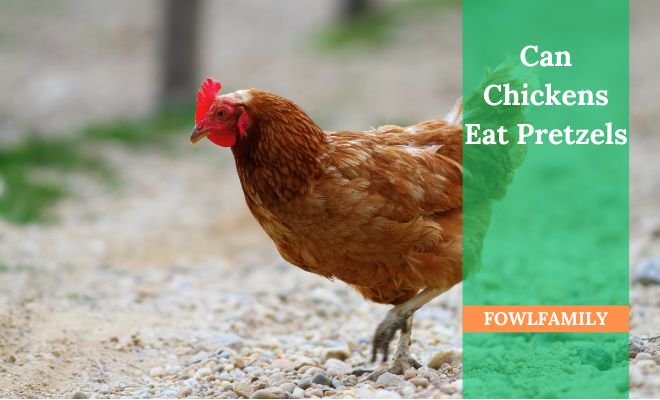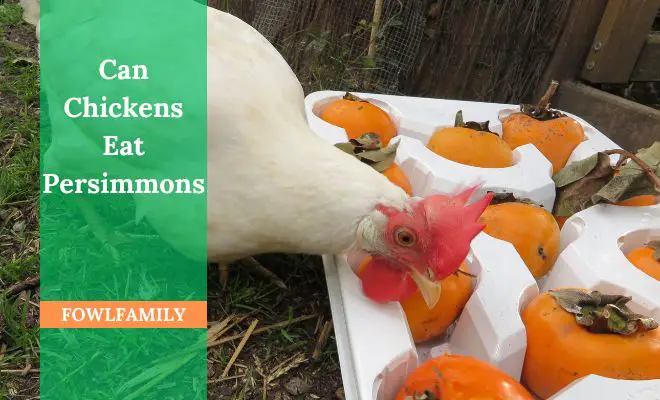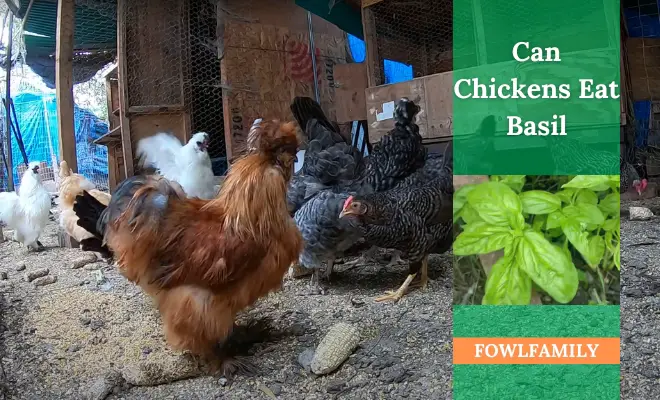
As a fresh, fragrant herb, Basil may catch the attention of backyard chickens. A guideline answering all the queries regarding Basil for chickens sounds great, then.
But can chickens eat Basil? Yes, chickens can safely eat basil leaves, stems, flowers, and seeds, but in moderation. This aromatic herb offers vitamins, minerals, and antioxidants that chickens can benefit from. However, too much Basil may cause loose droppings or diarrhea. So, following proper feeding guidelines is key.
But is Basil safe and healthy for chickens to eat? This in-depth guide will cover everything chicken owners need to know about feeding Basil to their flock. Keep on reading!
Table of Contents
Can Chickens Eat Basil? Yes, As An Occasional Treat!
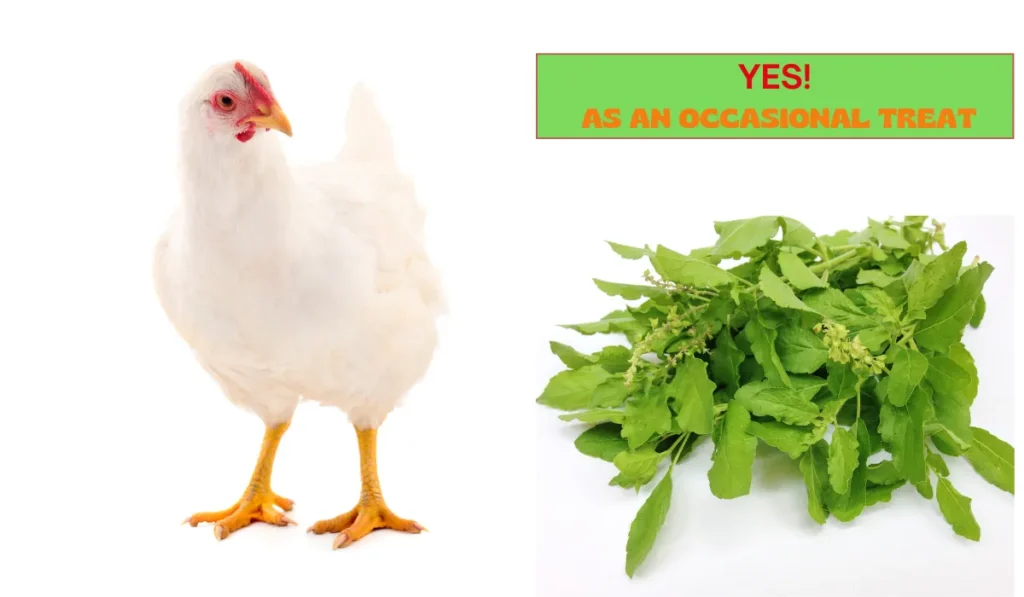
Yes, chickens can eat basil, as I said earlier. It is nutritious, causes no choking trouble, and is easy to digest for chickens. So, why not give Basils to your beloved flock?
Can Baby Chicks Eat Basil?
Young chicks under four weeks old should not eat Basil yet. There are chick starter feeds specially formulated for baby chicks. Once chicks are 5-6 weeks old, you can offer tiny taste-test portions of Basil.
However, only provide a few small pieces to start. Since chick digestive systems are quite sensitive, take it slow. Make sure chicks don’t fill up on Basil instead of starter feed. Wait a full day between introductions to watch for reactions.
What Happens If Chickens Eat Basil Daily?
Feeding Basil to adult chickens daily is likely fine in small amounts. Basil is a versatile and nutritious addition to any dish, providing both flavor and health benefits.
However, don’t let Basil become a substantial part of your chickens’ diet.
Too much can irritate digestion, so stick to a little treat-level portion. Signs of indigestion are loose droppings, lack of appetite, or low energy means it’s time to stop offering Basil.
How is Basil for a chicken’s diet? This video might have a good explanation for you, along with this study:
Can Chickens Eat All Parts of Basil Plants?
When it comes to basil, chickens can nibble on more than just the leaves. All the parts of the basil plant can be suitable chicken treats in small amounts. This includes:
- Leaves: The green basil leaves are likely the part we humans think of first. Luckily, chickens enjoy the taste and aroma of these fresh leafy greens, too. Offer a few small, chopped leaves at a time.
- Stems: The small stems that support the leaf and flower growth are perfectly fine for chickens to consume. They may be slightly tougher, so chop them up to aid digestibility.
- Flowers: In summertime, basil produces delicate white or purple flower clusters. Both the flowers and flower buds can make pretty garnishes that provide beneficial nutrients.
- Seeds – Mature basil plants yield tiny brown seeds that drop off to sow future generations of basil. These seeds can be scattered in the coop as fun hunting snacks. They contain healthy fats and protein.
Avoid letting chickens access large amounts of basil roots, soil, or potting mix, as ingesting these can cause impaction. Also, verify your basil plants have not been treated with herbicides or pesticides.
Organic, homegrown Basil is ideal for chicken treats.
Can Chickens Eat Dried, Frozen, or Other Forms of Basil?
Chickens can eat other forms of Basil in addition to fresh Basil. For instance,
- Dried Basil – Offer rehydrated in scraps or sprinkle on feed
- Frozen Basil – Thaw first and feed in very small portions
- Whole Basil Plants – Hang a plant near the coop for free foraging
Dried and frozen Basil is often more concentrated and strong-tasting than fresh Basil.
So start with tiny test portions, like a few dried flakes or one frozen cube. Watch for any decrease in normal eating patterns or energy levels.
Can Chickens Eat Different Varieties of Basil?

Sweet green Basil is likely the most common, but chickens can test other basil types like:
- Lemon basil
- Cinnamon basil
- Thai Basil
- Holy Basil
- African blue Basil
Stick to a few bites per bird when introducing a new basil variety. The essential oils and flavor compounds may be stronger or more irritating to sensitive chicken digestive systems.
Related Readings:
Nutritional Profile of Basils (Per 100g) for Chickens
According to USDA, Let’s look at the nutrients Basils come with.
| Nutrient | Amount | Unit |
|---|---|---|
| Energy | 23 | kcal |
| Energy | 94 | kJ |
| Protein | 3.15 | g |
| Lipid (fat) | 0.64 | g |
| Carbohydrate | 2.65 | g |
| Fiber, total dietary | 1.6 | g |
| Calcium | 177 | mg |
| Iron | 3.17 | mg |
| Potassium | 295 | mg |
| Sodium | 4 | mg |
| Zinc | 0.81 | mg |
| Copper | 0.385 | mg |
| Manganese | 1.15 | mg |
This data shows Basil contains decent protein levels for plant matter, vitamins, minerals, and antioxidants.
5 Health Benefits of Feeding Basils to Chickens
Giving chickens some basil can have a few good effects, including:
1. Boosts Immunity
Basil contains essential vitamins, minerals, and antioxidants that support chickens’ immune systems. The nutrients help fight sickness and disease.
2. Relieves Stress
The aromatic compounds in basil leaves have a calming effect that can relieve chickens’ stress levels. This helps them stay relaxed and happy.
3. Supports Healthy Blood
The vitamin K found in Basil aids bone health and proper blood clotting for injury recovery.
4. Aids Digestion
Basil’s essential oils gently support digestion in chickens while also relieving constipation.
5. May Enhance Productivity
Studies show Basil in poultry diets can improve egg production, weight gain, and other growth factors.
5 Risks and Concerns Associated With Overfeeding Basil to Chickens
Eating an excessive amount of any new food can shock a chicken’s digestive tract. Introduce Basil slowly and stick to a little at first. Signs of indigestion to watch for include:
- Loose stool or diarrhea
- Lack of appetite
- Low energy or lethargy
- Feather pulling
- Decline in egg-laying
If you observe any of these, remove or reduce Basil immediately. Allow the digestive system to recover before slowly reintroducing Basil again after a week off.
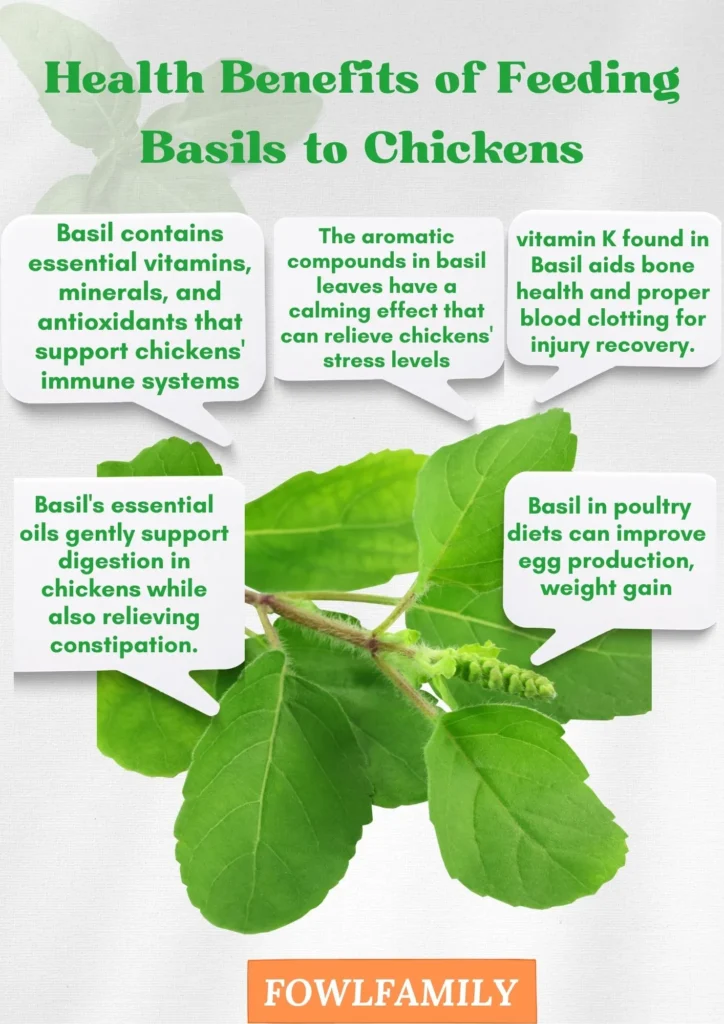
How Much Basil Can Chickens Eat? Recommended Serving Sizes
For average-sized backyard chickens, here are some general basil-serving guidelines:
- Baby Chicks Under 4 Weeks – None
- Chicks Over 6 Weeks – A few tiny pieces every 3-4 days
- Adult Hens – Around 2-3 whole leaves or a couple of basil flowers two times per week
- Roosters – Same as hens
The exact safe amount can vary based on the individual bird’s size and sensitivity. When trying a new food, always start slowly at first.
Increase portion sizes gradually while monitoring droppings, energy levels, and feed intake closely for any issues.
How to Serve Basil to Backyard Chickens
When sharing garden-fresh Basil with your flock, keep these feeding tips in mind:
- Remove any wilted or damaged leaves and rinse thoroughly before feeding.
- Chop or tear leaves, flowers, or stems into smaller, chick-sized bites.
- Introduce one basil part at a time, like leaves first, then flowers later.
- Mix chopped Basil with standard feed or grain rations.
- Sprinkle whole leaves, flowers, or seeds into the coop or run for natural foraging.
- Consider growing basil plants directly inside outdoor run areas for pest control and nibbling.
In Summary
When raising backyard chickens, we look for healthy treats. Fresh basil fits the bill. It has lots of vitamins and minerals that improve immunity, digestion, blood health, and calmness. It also adds flavor to their diet.
Adding small amounts of homegrown basil to feed does good things. It makes hearty birds and more eggs. This simple routine nurtures the bond between the flock and the farmer. Feeding basil strengthens that special connection. All in all, with a little effort that betters their lives, we better ours, too. Simple acts, happy birds.

